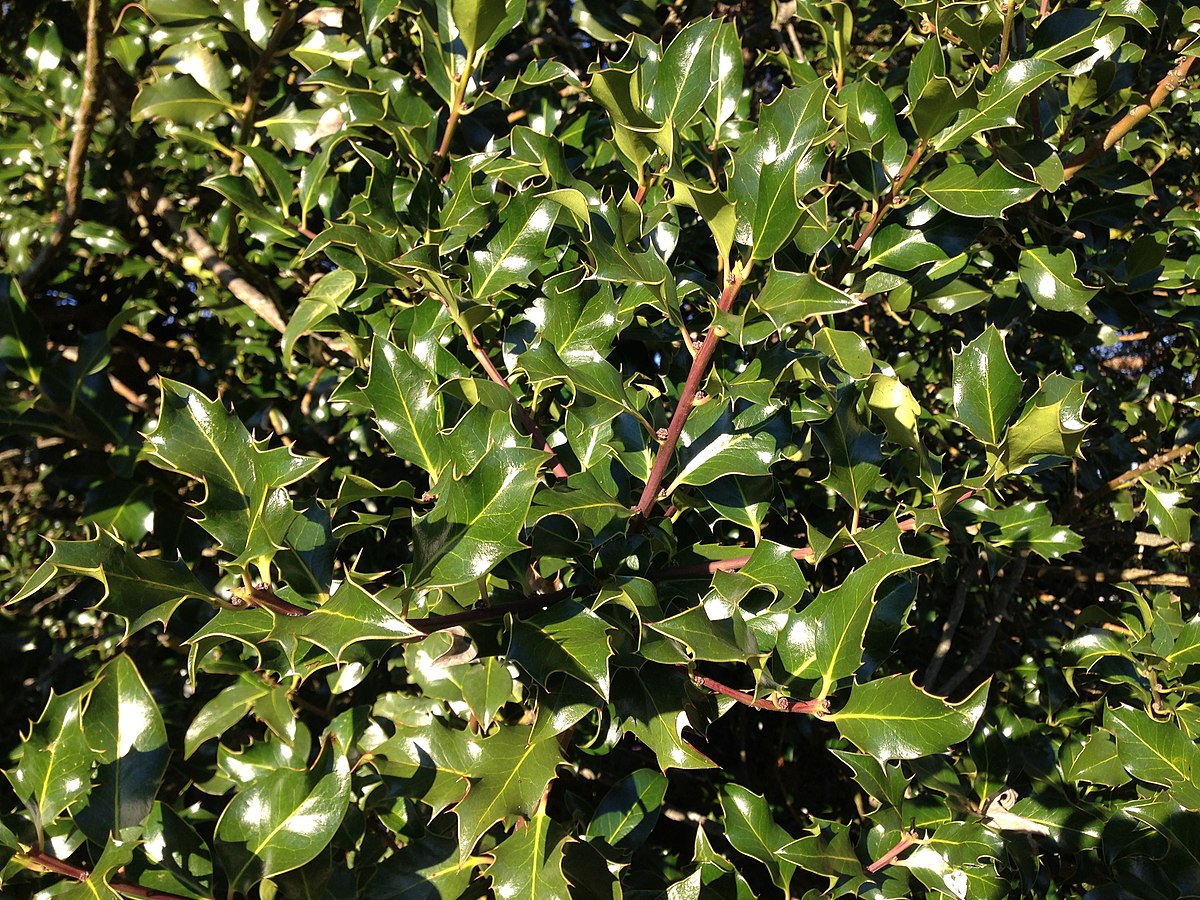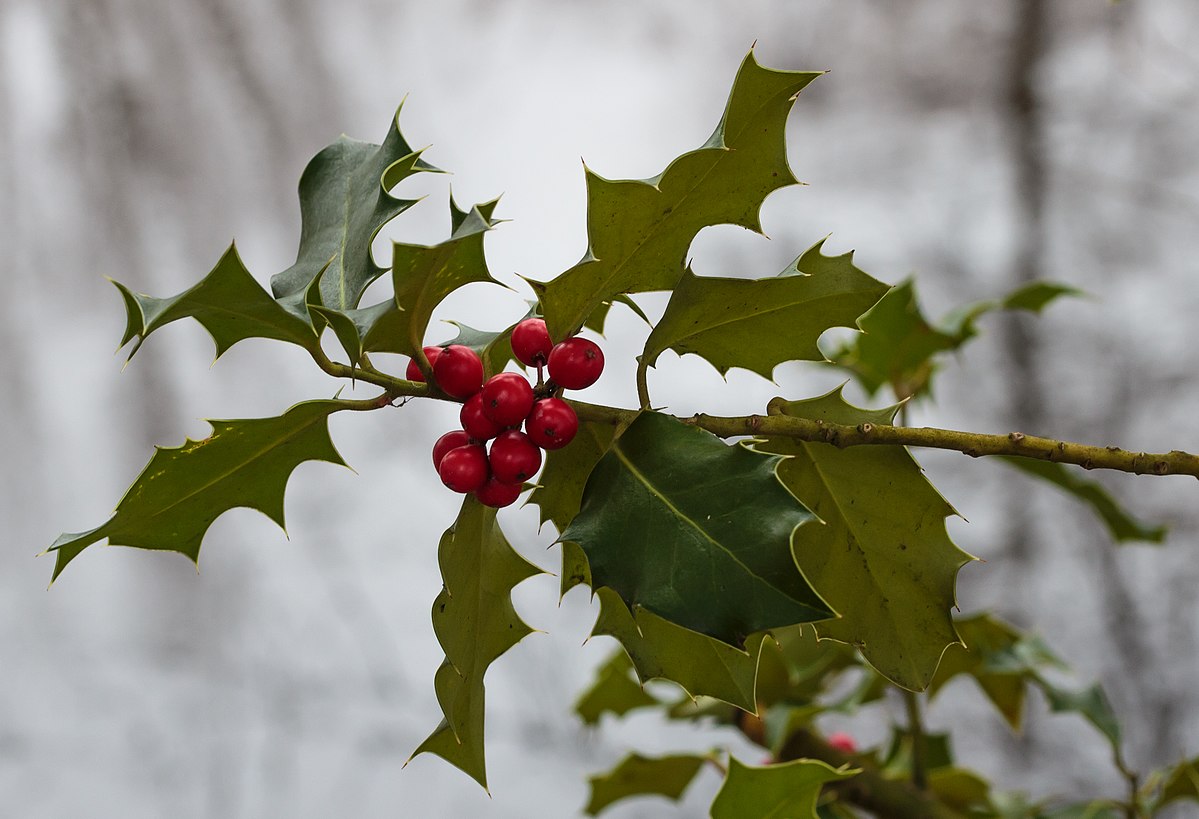English Holly

English Holly
(Ilex aquifolium )
Priority: - Established / Strategic Control
Tags: Terrestrial
Identification and Reproduction
Identification:
- English holly is a slow growing perennial. It is evergreen and can take on a shrub or tree form.
- May grow from a single trunk or be multi-stemmed. It can grow up to 10 m tall.
- Bark on young plants is green but with maturity bark will become smooth and silvery grey.
- The leaves are arranged alternately, evergreen, dark, glossy, wavy, and spiky. It should be noted that as this plant matures leaves will become smoother and may even lose its spines.
- Female trees will produce red berries in the winter. They occur in clusters and each berry contains 2-8 seeded nutlets.
Reproduction:
- Seeds are formed in berry form and can be dispersed long distances with the help of birds.
- A single tree will produce 120,000 seeds annually.
- It can also reproduce vegetatively by sending shoots from the root system and "layering" branches or stems to the ground to root.
- If stumps are left, English holly will re-sprout.
Habitat & Ecology
- This plant is adaptable to both shade and sun.
- English holly thrives in moist sites.
- Is common in both deciduous and coniferous forests.
- It can be found invading residential areas, wetlands, and forests of the south coast of B.C
Impacts
Social:
- The berries are toxic to humans and pets if ingested.
Ecological:
- Its deep roots are aggressive and outcompete native species for nutrients and water.
- Forms dense thickets that dominate the forest.
- English holly changes the composition of the environment. There is evidence that this plant alters soil conditions by adding large amounts of organic matter and sulphur.
- Large thickets will also outshade native shurbs and understorey plants.
Management
For alternative planting options to English holly, check out the ISCBC's Grow Me Instead guide.
Mechanical/Manual Control:
- Pulling or digging is effective for smaller or young infestations. Use shovels to help loosen the soil to ensure entire root masses are removed.
- If plant is shrubby consider using pruners or loppers to cut the branches prior to digging the roots out.
- For larger tree plants girdling may be beneficial. This technique should be done by professions; remove a strip of bark from the circumference of the tree near the base.
- Any English holly tree that is greater than 5 cm in diameter should be left and removed by professional arborists.
- Cutting near the base is effective and it is recommended in combination with herbicide application.
- Do not compost berries.
Chemical Control:
- Currently triclopyr, imazapyr and glyphosate are registered for use on English holly.
- Surface or stump application in combination with mechanical cutting has proven to be effective, as this prevents resprouting. Cut holly stem as low as possible then apply herbicide to the exposed cut area.
- Stem injection may be used to placce herbicide capsules around the base of the tree trunk.
- Do not apply herbicide by foliar applications. Since leaves are evergreen, it is difficult for herbicides to be absorbed.
- Please carefully read and follow herbicide labels prior to application.
For further details on proper English holly chemical control please refer to the Metro Vancouver's BMP for English Holly (pg. 14-19).
Resources
Download the Metro Vancouver Factsheet on for the English Holly here.
Header photo (Paulo Etxeberria).
Photo Gallery

×





